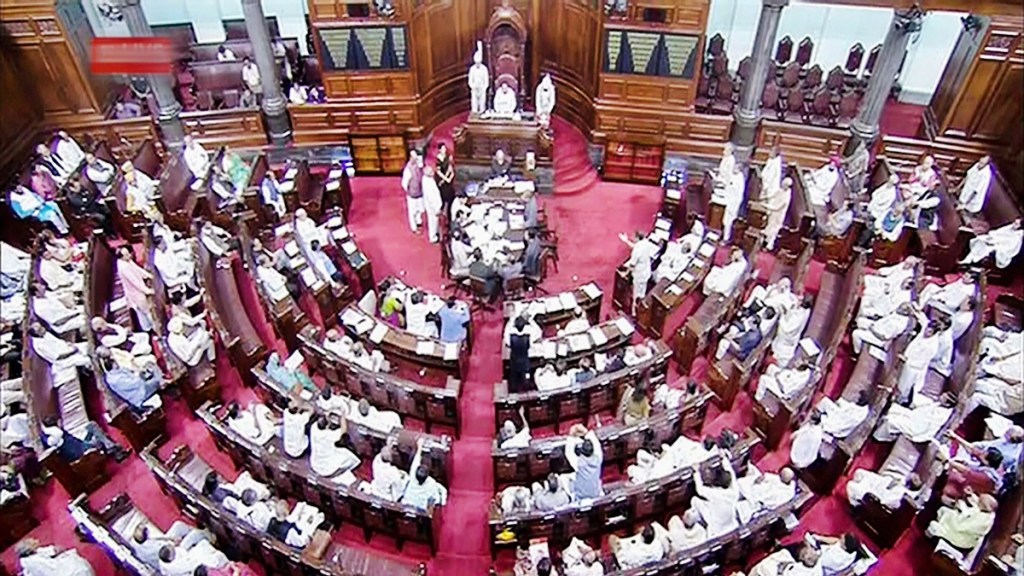Rajya Sabha Election 2024 Winners List: The election process for 15 Rajya Sabha seats across three states concluded on Tuesday, with results declared in the evening. RIn a decisive turn of events, the Samajwadi Party faced a setback in one seat while the Congress failed to win the sole seat in Himachal Pradesh despite the party’s majority in the state Assembly. A total of 56 candidates were in the fray of which 41 were elected unopposed.
In Karnataka, the Congress secured three out of four Rajya Sabha seats, while the BJP clinching one. However, the elections were marred by one cross-voting and an abstention, posing a setback for the saffron party in the southern state. Meanwhile, the saffron party secured eight out of ten seats in Uttar Pradesh. The Samajwadi Party faced a setback as one of its three candidates was defeated due to cross-voting where all eight candidates fielded by the BJP emerged victorious.
Also Read:Rajya Sabha elections 2024 Results Live Updates
The lone Rajya Sabha seat in Himachal Pradesh became a focal point of controversy as the BJP claimed that the Congress government in the state had lost a majority. The claims set off a flurry of activity which also saw the party’s internal dissent come to the fore.
Also Read:Rajya Sabha elections: How cross-voting by SP leaders could backfire for Congress in Lok Sabha polls
Rajya Sabha Election Result 2024: Check full list of winner
G Babu Rao (YSR Congress ) – Andhra Pradesh
YV Subba Reddy (YSR Congress) – Andhra Pradesh
M Raghunath Reddy (YSR Congress) – Andhra Pradesh
Sanjay Kumar Jha (JDU (U) ) – Bihar
Dharmshila Gupta (BJP) – Bihar
Bhim Singh (BJP) – Bihar
Manoj Kumar Jha (RJD) – Bihar
Sanjay Yadav (RJD) – Bihar
Akhilesh Prasad Singh (Congress) – Bihar
Devendra Pratap Singh (BJP) – Chhattisgarh
JP Nadda (BJP) – Gujarat
Jasvantsinh Parmar (BJP) – Gujarat
Mayank Nayak (BJP) – Gujarat
Govindbhai Dholakia (BJP) – Gujarat
Subhash Barala (BJP) – Haryana
Murugan (BJP) – Madhya Pradesh
Umesh Nath Maharaj (BJP) – Madhya Pradesh
Banshilal Gurjar (BJP) – Madhya Pradesh
Maya Naroliya (BJP) – Madhya Pradesh
Ashok Singh (Congress) – Madhya Pradesh
Ashok Chavan (BJP) – Maharashtra
Medha Kulkarni (BJP) – Maharashtra
Ajit Gopchhade (BJP) – Maharashtra
Milind Deora (Shiv Sena ) – Maharashtra
Praful Patel (NCP) – Maharashtra
Chandrakant Handore (Congress) – Maharashtra
Ashwini Vaishnaw (BJP) – Odisha
Debashish Samantray (BJD) – Odisha
Subhashish Khuntia (BJD) – Odisha
Sonia Gandhi (Congress) – Rajasthan
Chunnilal Garasiya (BJP) – Rajasthan
Madan Rathore (BJP ) – Rajasthan
Renuka Chowdhury (Congress) – Telangana
Anil Kumar Yadav (Congress) -Telangana
V Ravichandran (BRS) – Telangana
Sushmita Dev (TMC) – West Bengal
Sagarika Ghose (TMC) – West Bengal
Mamata Thakur (TMC ) – West Bengal
Md Nadimul Haque (TMC) – West Bengal
Samik Bhattacharya (BJP) – West Bengal
Mahendra Bhatt (BJP) – Uttarakhand
Jaya Bachchan (SP) – Uttar Pradesh
Ramji Lal Suman (SP) – Uttar Pradesh
RPN Singh (BJP) – Uttar Pradesh
MP Chaudhary Tejveer Singgh (BJP) – Uttar Pradesh
Amarpal Maurya (BJP) – Uttar Pradesh
Sangeeta Balwant (BJP) – Uttar Pradesh
Sudhanshu Trivedi (BJP) – Uttar Pradesh
Sadhna Singh (BJP) – Uttar Pradesh
Naveen Jain (BJP) – Uttar Pradesh
Sanjay Seth (BJP) – Uttar Pradesh
Harsh Mahajan (BJP) – Himachal Pradesh
Ajay Maken (Congress) – Karnataka
Nasser Hussain (Congress) – Karnataka
GC Chandrashekar (Congress) – Karnataka
Narayansa Bhandage (BJP) – Karnataka
Rajya Sabha election process
Every two years, the Rajya Sabha, India’s Upper House, witnesses elections for one-third of its 245 seats. This intricate process involves indirect voting by elected members of state legislative assemblies and union territories. Elected members of state legislative assemblies and union territories serve as the eligible voters in these elections. Candidates are nominated by political parties based on their respective strengths in the state assemblies.
Single transferable vote (STV) system:
The elections follow the Single Transferable Vote (STV) system. This allows voters to rank candidates in order of preference. If a candidate secures enough first-choice votes, they are elected. Surplus votes from winning candidates are then transferred to lower-ranked choices based on preferences, potentially electing other candidates until all seats are filled. This ensures a proportional representation of various parties.

